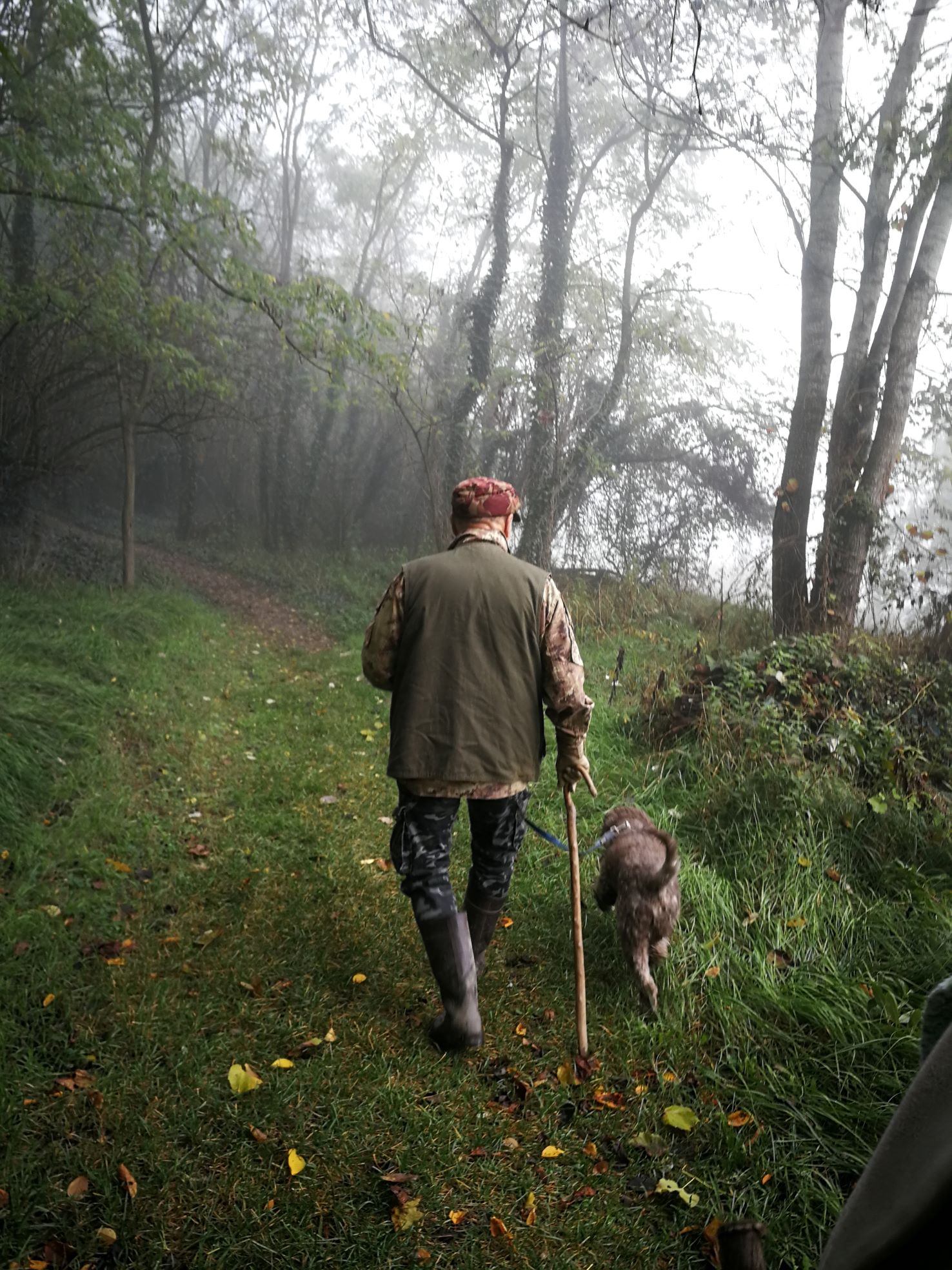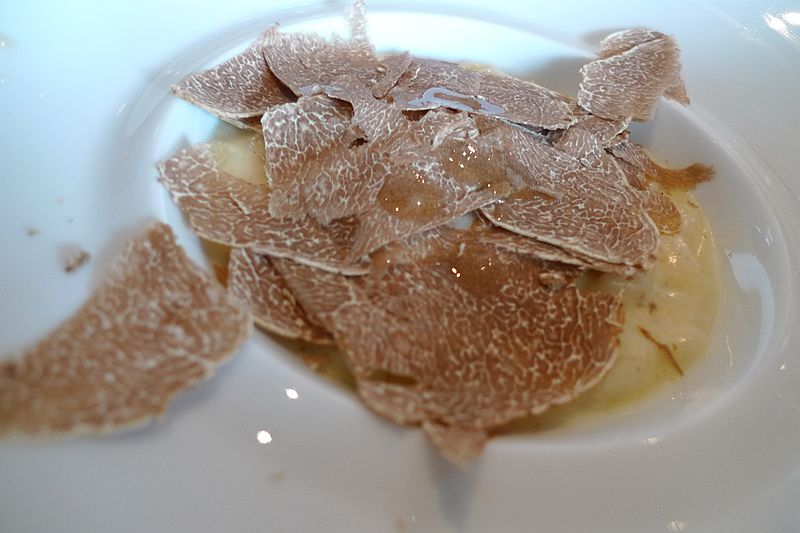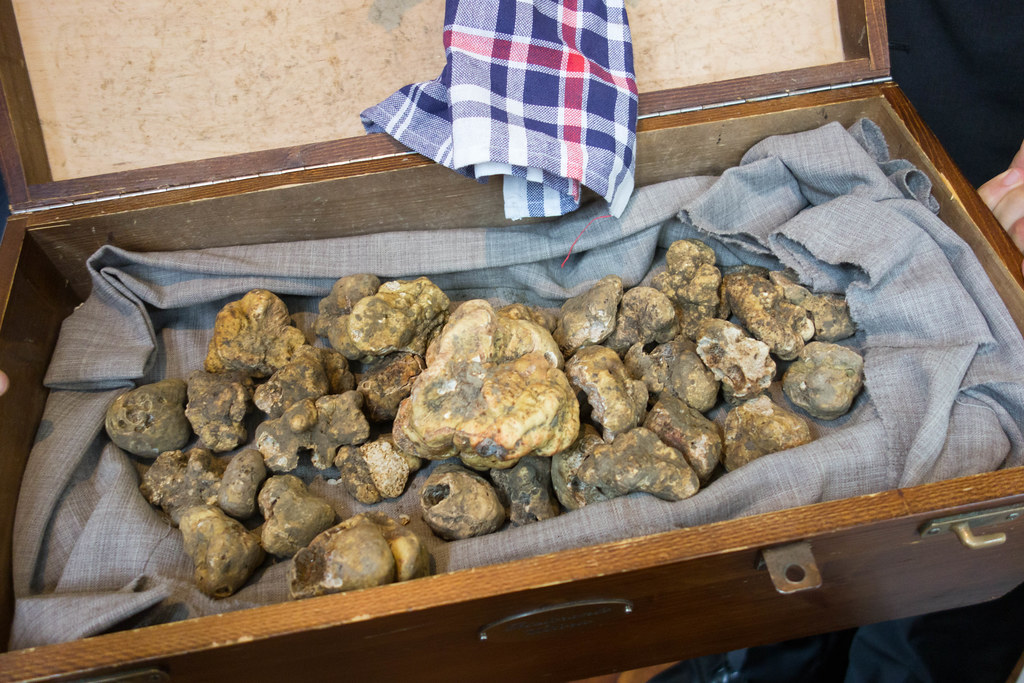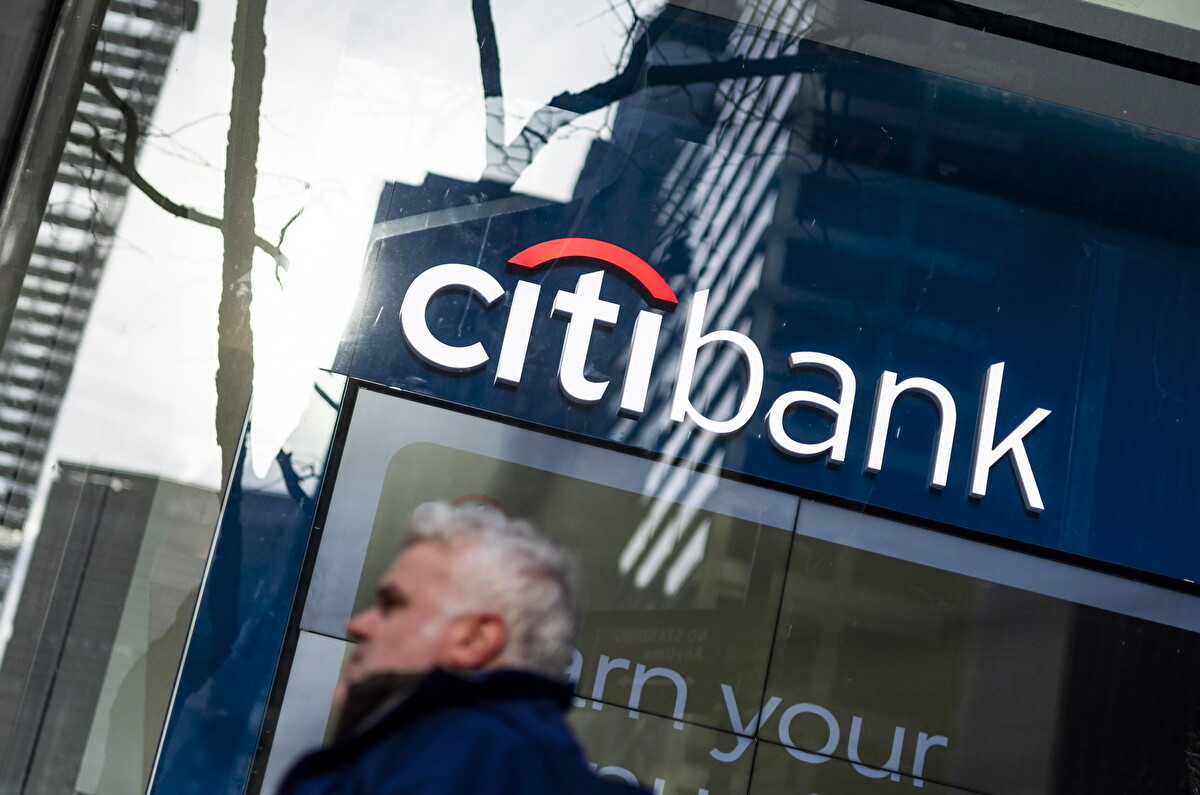When we enter the brand-new Museum of Truffle MUDET, in Alba – a small town in the northern Italian region of Piedmont, where the famous Nutella is also made – this is what we read as a welcome sign. Many people thought for years that truffles were like potatoes, but they were wrong. Truffles are mushrooms, even if they grow underground and are invisible to us.
The fact they are difficult to find is one of the reasons they are so valuable. Although now a fundamental distinction needs to be made. There are two large types of truffles, very different from each other. The first is the Black Truffle, the most common type, which can also be cultivated. The other one, more prestigious, is the White Truffle. In particular, the White Truffle of Alba is the rarest and most prized truffle in the world: it is considered a jewel of gastronomy, and its price reflects that (even if it’s not as pretty as a gem).

At the last World Auction of the Alba White Truffle, November 12, a white truffle weighing over 1 kg was sold to a bidder from Hong Kong for 141,000 dollars (the entire sum goes, as every year, to benefit a local charity). And at the International Alba White Truffle Fair running to December – one of the main showcases of haute cuisine and Italian excellence – you can find truffle prices ranging from 70 to 1200 dollars.
The white truffle of Alba has always been so prestigious. Its first appearance in history dates back to the Naturalis Historia by Pliny I the Elder, 78 AD. But it was between 1700 and the beginning of the 20th century that its fame spread first in Europe and then throughout the world.
But why is white truffle considered so special?
“Because it is invisible, harmonious and above all, unique”, explains Isabella Gianicolo from the National Center for Truffle Studies. Only Piedmont, in fact, the calcareous soil, humid but free of stagnation, makes truffles with all these characteristics. Starting from the scent: just think that in a black truffle there are 3 aromatic molecules, in a white one 120.
The white truffle is rare, it cannot be cultivated and not even preserved (it must be consumed in a week at most). To find truffles you need a great sense of smell, and the human one is not enough. Dogs are therefore trained – of any breed, even if the medium-sized ones are preferred – and they go out at night to look for truffles in the woods. Darkness is not a necessary condition, but it helps, because the dogs have fewer distractions and, also, the routes are kept “secret”.

The gloomier the days, the happier the hunters, because those are ideal conditions for finding truffles, even if finding them is never guaranteed. In fact, the truffle releases its essences when it reaches full maturation, but this happens only within a few hours.
We too tried this experience: together with Mr. Natale and his cute Lagotto dog named Bill, we went on the trail – or rather: on the smells – of truffles in Piedmont. Mr. Natale is a former Ferrari manager who today, out of passion, works as a “trifolau” (this is how truffle hunters, who were recently also portrayed by the famous photographer Steve McCurry for MUDET, are called in Piedmontese dialect) and he organizes ad hoc expeditions for the visitors (for info: http://www.lacasadeltrifulau.it/).
The hunting period for the white Alba truffle runs from September to January. Going out with a trifolau means walking for a long time in the woods, among oaks, lime trees and hazelnut trees (the most suitable trees for hosting white truffles among their roots), and then chasing the dog when it has smelled something and runs, stopping it before it starts digging and ruin the “treasure”. Truffles are in fact extremely delicate, even in the kitchen. In fact, if black truffles can be minced, pounded, cut, and even cooked, white ones absolutely cannot. They must be cleaned only with cold water and a brush, and then sliced with a suitable tool called “truffle-cutter”: they are eaten raw, and are the ideal condiment for raw meat, eggs, and the typical Piedmont pasta dish, “tajarin” (a kind of fresh spaghetti made with eggs).
And remember: if you don’t consume the entire truffle at once, keep it in the fridge, wrapped in absorbent paper and closed in a glass jar. But it is very unlikely you will take that risk.












